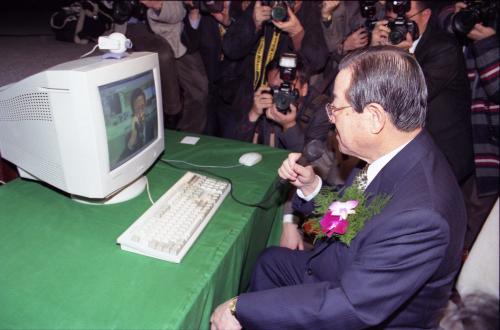The “Firsts” and “Bests” of Government Innovation
The Korean Government will accredit the “Firsts” of our innovations that contributed to the public’s comfort and safety, and select the “Best” cases of government innovation to spread as examples to our many institutions.
The First
An Internet-based Electronic Patent Application System
- Korea Intellectual Property Office
- 2023-12-20
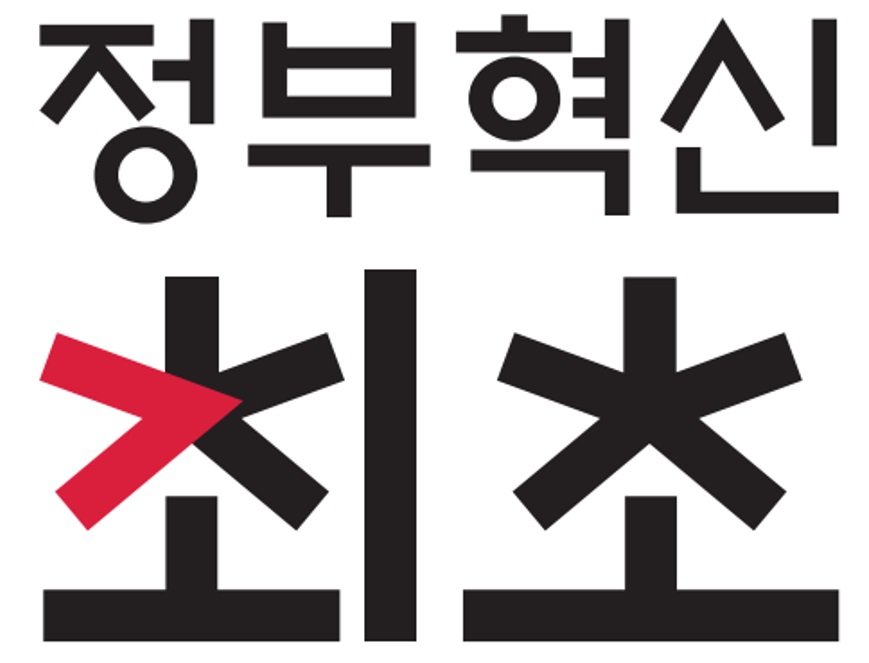
In 1999,the Korean Intellectual Property Office(KIPO) opened an internet-based electronic patent application system, the first of its kind in the world. This was an online service that could be utilized by anyone, with ease and speed. |
Contents
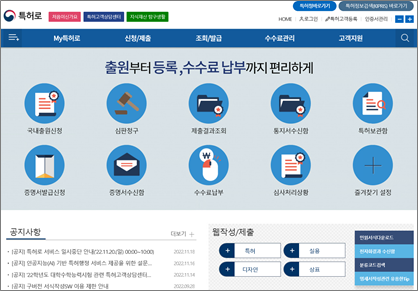
√ Accomplishments and expansion
■ Patent Applications, from anywhere, with ease and speed!
The
very idea of owning a patent is rather grand. Yet, the idea of actually
applying for one may be daunting for you. It turns out the process is not that
difficult. Nowadays, as long as you have access to a personal computer or a
smartphone, applying for a patent takes about 10 minutes of your time. However,
even until the mid-1990s, online applications sounded like an element of
Science Fiction. The Korean Government brought this seemingly fictitious
concept into reality in 1999, with ‘KIPOnet’.
Wait, what is an “Electronic Patent Application”? √ An Electronic Patent Application describes a method of applying for a patent through online means, such as through the internet. √ Its
many advantages include an enhancement
in convenience, lowered fees,
and precision of processing etc. |
KIPOnet(특허넷 at inception, meaning Patent-net, currently renamed) is a system that accepts online applications for industrial properties like patents, utility models, trademarks and designs, and processes their electronic review. As applicants can not only apply for patents conveniently, but also gain online access to their pending review status and results, KIPOnet is appraised to have left a significant mark on the improvement of patent application convenience, with contributions to patent administration simplification and informatization
However,
the Korean Government takes particular pride in the fact that the KIPO’s KIPOnet is the world’s first
ever system supporting applications for all
forms of industrial property, including patents and trademarks.
※ Starting years for other application systems in the world: US and EU (2000), WIPO* and Japan (2005)
*
WIPO (World Intellectual Property Organization): The UN’s specialized agency
created to promote and protect intellectual property around the world |
■ Back in the 1990s, a single patent would cost 320,000 Won, and take Three Years to process
During the 1990s, there was a rapid increase in applications for industrial properties. Even until the mid-90s before KIPOnet was developed, one would have to wait three years, and spend 320,000 won (a standard example application consisting of 100 pages of documentation). to officially apply for and register a single case of industrial property. Applicants were required to visit the KIPO in person for each application request, and again whenever additional documents were required, resulting in repeated costs to acquire documents and added inconvenience. The largest frustration came from the applicant’s inability to confirm the current status of registration for their ongoing application. The methods of processing utilized by the KIPO also required a change. The office’s manual approach to processing documents lacked the efficiency required to process the ever-expanding workload of applications.In order to innovate for such inconveniences, the KIPO established a “7 year Plan to Computerize Patent Administration Matters,” and implemented an overall informatization of patent administration processes. KIPOnet, the online patent application system, was a prime example of such efforts. Starting from November, 1995, three years of development and a 31.8 billion won budget was invested to make the system a reality. Finally, on January 2nd, 1999, the KIPOnet system was revealed to the world
■ Full speed ahead for a Nation of 10 Million patent registrations.
With
KIPOnet live, all elements of patent
administration, including application, registration, and review were
computerized. An applicant can process all patent application matters online,
without having to visit the KIPO with a handful of documents. Due to this
convenience, by its second month of service, KIPOnet’s online application process had already accounted for 65%
of all patent applications. Other nations operating similar electronic
application services took at least three years to reach such proportions,
displaying how swiftly the system settled in with the Korean public.
In
comparison to the existing manual process, the appearance of an internet-based
electronic application system succeeded in significantly decreasing lead time
and cost. (Based on data from 2001, two years after KIPOnet went live)
√ Total review lead-time reduced by 30% after two years: 37 months (1996) → 21.3 months (2001) √ Cost burden on applicants reduced: 320,000 won (1996) → approx. 100,000 (2001) √ Internet-based processing contributed to collective annual cost-savings of 200 billion won ※ As 81.4% of all applications were handled electronically in 2001, transportation costs and travel time occurring from in-person visits were mitigated. √ Annual savings were assessed at 30 billion won due to significant reduction in administrative costs* ※ Cost of printing technical documents for patents, courier fees, storage fees for documents, utility costs etc. |
Based on this convenient system, in 2003, the Republic of Korea broke records as the first nation to surpass 1 million electronic patent applications.
Meanwhile,
the early iterations of KIPOnet
still had a lot of room for improvement. The largest complaint from private
applicants and small business applicants was its unavailability on weekends and
holidays. A change was also required for international patent applications that
had to continue utilizing existing manual processing methods.
In
2005, after analyzing 740 user requirements and 1,800 work processes, the KIPO
finally rolled out KIPOnet 2*, an
electronic application and at-home review system which now allowed applicants
to handle patent application matters from anywhere, at any time. This marked
the beginning of an era of completely non-stop electronic applications. KIPOnet was also the first system for a
Korean government agency that provided 24-hour, year-round, non-stop electronic
processing services. KIPOnet 2, in
particular, was the first of its kind to allow processing of PCT (the
International Patent System, under the Patent Cooperation Treaty) patent
applications with convenience and speed online, and continues to evolve with
persistently innovative ideas.
*KIPOnet 2: Switched from existing batch processing methods to real-time processing methods, allowing patent processing possible regardless of time of day or non-work days.
The
Innovation History of KIPOnet √ 1999.01. ‘KIPOnet’ the world’s first internet-based electronic patent application service, is launched. √ 2001.07. Existing CD-ROM reports, transitioned to Internet-based reports. √ 2005.01. KIPOnet 2 is live, with 24-hour, year-round non-stop service for electronic applications, supporting the world’s first online application service for international patents. √ 2007.11. Web-based electronic application service opened √ 2009.01. World’s first remote video system implemented and operated for patent applications √ 2010.01. World’s first 3D design application system established. √ 2020.03. World’s first mobile service for trademark applications implemented |
Based on many “World’s First” accomplishments, KIPOnet has been appraised as a successful model of the patent administration system, and is spreading its experiences and best practices in operating patent administration to the world. The Korean model has actually become a benchmarking standard for other nations including Japan, China, France etc. The KIPO has supplied KIPOnet in the form of official aid or exports, to the UAE, Mongolia, Azerbaijan, the African Regional Intellectual Property Organization (ARIPO), etc.
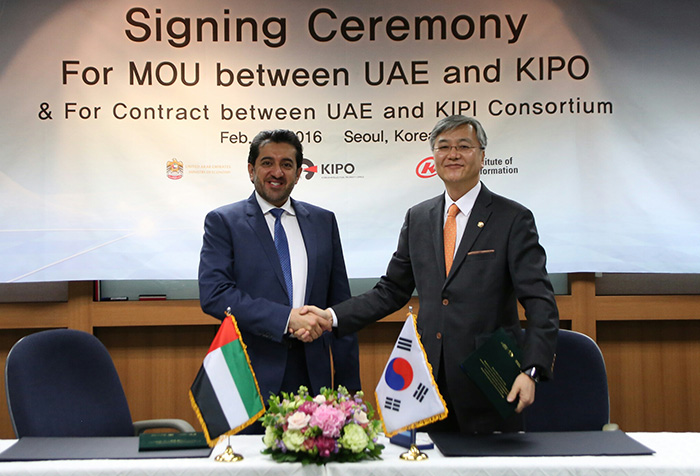
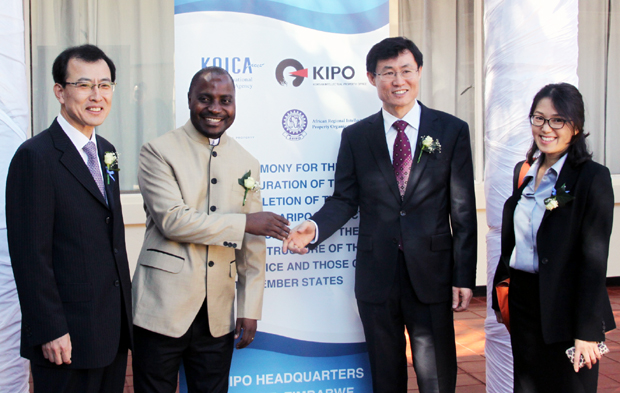
[Left] 2015 Opening ceremony for the ARIPO’s Patent Information System. ⓒKIPO [Right] The 2016 Signing of an export MOU for ROK-UAE. ⓒ KIPO
■ The KIPO’s ‘Internet Based Electronic Patent Application System’
Based on such innovation, the KIPO
was ranked first in ‘IP Innovation Ranking 2021’, provided by the World
Trademark Review (WTR), an intellectual property intelligence service that
assesses the IP agencies of the world. The KIPO plans to further complete a
next-generation KIPOnet system, as an innovation in patent administration
utilizing artificial intelligence technology, by 2027. We hope that the KIPOnet
system of Korea, a powerhouse nation of intellectual property, once again
causes tectonic shifts throughout the world as an international standard in the
patent administration field.


